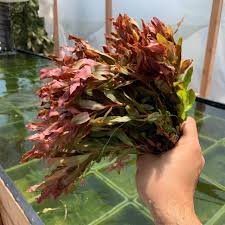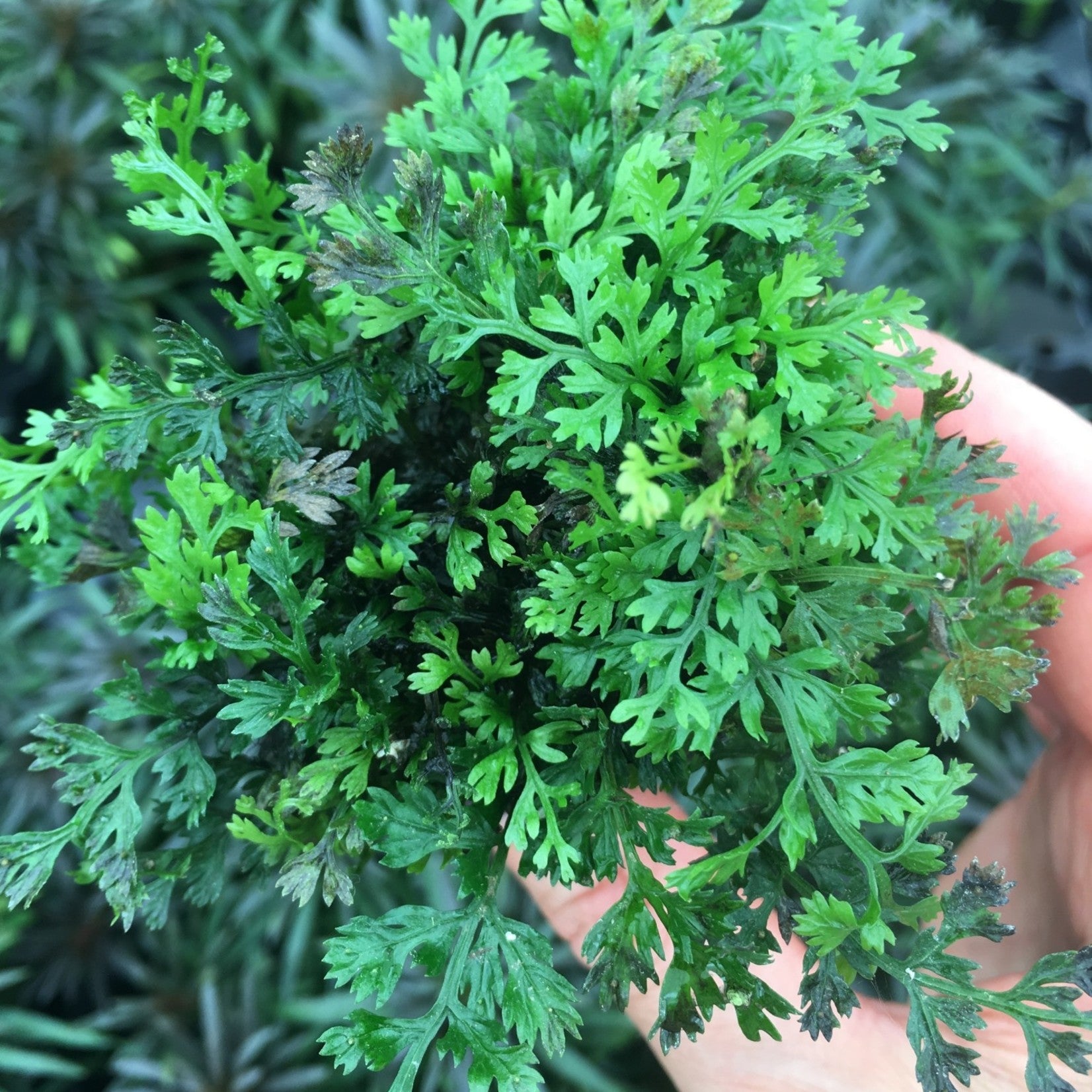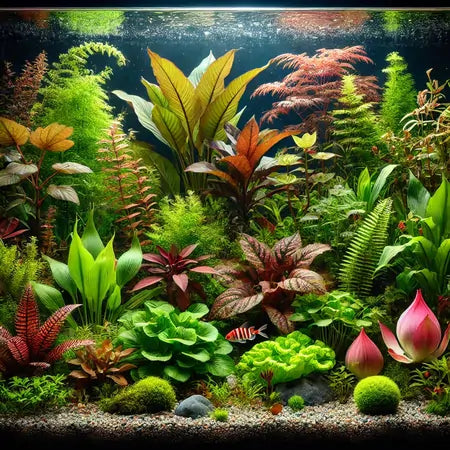Trending searches
Popular products
$0

Background plants, often found in aquariums and water bodies, are not just for aesthetics. They play a crucial role in maintaining and improving water quality. In this blog, we will explore how these plants can help in various ways.
Background plants absorb nitrates, phosphates, and other harmful chemicals, thus improving water quality. They act as natural filters which helps in maintaining a cleaner and healthier environment for aquatic life.
One of the most significant ways background plants contribute to water quality is through nutrient absorption. By taking in excess nutrients, such as nitrates and phosphates, these plants help prevent the development of harmful algae blooms. Algae blooms can deplete oxygen levels, making the water uninhabitable for many aquatic organisms.
Moreover, these plants can also trap and utilize organic matter, such as decomposing plant material and fish waste. This process helps to mitigate the build-up of toxins in the water and minimize the presence of harmful bacteria, creating a safer environment for your aquatic pets.
A delightful addition to any aquarium, the Cabomba Caroliniana Bunch is known for its lush, intricate leaves that effectively trap debris and organic particles, further aiding in maintaining pristine water conditions.
Through the process of photosynthesis, background plants release oxygen into the water. This oxygen is essential for the respiration of aquatic organisms, promoting a balanced ecosystem.
Photosynthesis is not only beneficial for producing oxygen but also helps in reducing the amount of carbon dioxide in the water. High CO2 levels can lower the pH of the water, creating an environment that is harmful to fish and other aquatic life. By absorbing carbon dioxide, background plants help to stabilize the pH levels.
Plants like the hornwort significantly impact the oxygenation process. Known for its feathery appearance, hornwort is particularly effective in absorbing CO2 and releasing oxygen, ensuring a balanced aquatic environment. Learn more about such interesting plants in our Floating Aquarium Plants Guide.
In addition to oxygen production, background plants also absorb light energy. This energy is then used to convert carbon dioxide and water into glucose and oxygen. This glucose serves as an essential energy source for many aquatic organisms, supporting a thriving and healthy aquatic ecosystem.
Background plants compete with algae for nutrients, thereby reducing algae growth. This leads to clearer water and a healthier environment for fish and other aquatic creatures.
Algae thrives on excess nutrients, especially nitrates and phosphates. By outcompeting algae for these essential nutrients, background plants help in keeping algae populations in check. This competition ensures that the water remains clear and aesthetically pleasing, eliminating the unwanted green bloom that is often seen in poorly maintained aquariums.
Some plants, such as the Amazon Sword, are especially effective at outcompeting algae. These plants’ broad leaves not only absorb a significant amount of light, depriving algae, but also cover large areas of the tank, preventing algae spores from settling and proliferating.
In addition to nutrient competition, many background plants release allelopathic chemicals. These chemicals inhibit algae growth by disrupting their cellular processes. Thus, integrating such plants into your aquatic setup acts as a natural method to curb unwanted algae without resorting to chemical treatments, maintaining a natural and safe environment.
The presence of background plants offers hiding places for fish and other aquatic animals, reducing their stress levels. This contributes to the overall well-being of the aquatic creatures, leading to a more stable and cleaner tank.
Background plants, like green cabomba, with their dense and bushy structure, provide excellent cover and hiding spots for fish, especially smaller species and fry. This reduces their vulnerability to potential predators and aggressive tank mates, fostering a more peaceful and secure environment.
When fish feel secure, they are less likely to exhibit signs of stress, such as erratic swimming or hiding. Lower stress levels contribute to better health and stronger immune systems. This reduced stress means that fish are more active, display better colors, and are less susceptible to diseases. The presence of plants thus becomes integral to the overall vitality and long-term health of the aquatic inhabitants.
If you’re looking to introduce plants that are both visually appealing and provide ample shelter, consider exploring our Live Aquarium Plants Essential Bundle. This bundle offers a mix of diverse plants, perfect for any aquarium.
Background plants support beneficial bacteria that play a key role in the nitrogen cycle. These bacteria help in breaking down waste products, thus maintaining high water quality.
The roots of background plants provide an ideal substrate for beneficial nitrifying bacteria. These bacteria convert harmful ammonia and nitrites, produced from fish waste and decaying organic matter, into less harmful nitrates. This process is a crucial component of the nitrogen cycle and helps in maintaining a stable and healthy aquatic environment.
Having a well-planted aquarium means there’s more surface area for these beneficial bacteria to colonize. This increased surface area ensures a more efficient breakdown of waste products, reducing the need for frequent water changes and minimizing the risk of toxic spikes. This mechanism is particularly evident in plants with extensive root systems, such as the Anubias Nana, which supports a thriving bacterial colony.
This symbiotic relationship between plants and bacteria benefits the entire aquarium ecosystem. While the plants provide a habitat for the bacteria, the bacteria, in turn, break down nutrients that plants utilize for their growth. This natural partnership reduces the reliance on artificial filtration systems and promotes a balanced and self-regulating aquatic environment.
Incorporating background plants in your aquatic environment not only enhances its beauty but also significantly improves water quality. From absorbing harmful substances to providing oxygen, these plants are indispensable for a healthy aquatic ecosystem.



Check out our shop for a variety of fresh, farm-grown plants! Find the perfect options to enhance your aquarium today.
!